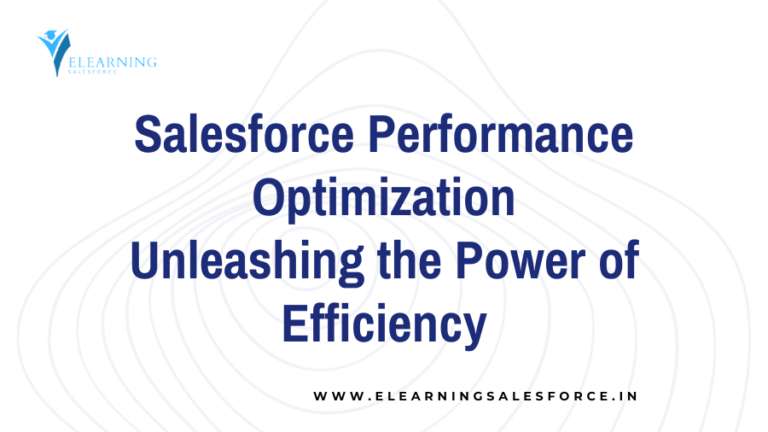Salesforce is a powerful customer relationship management (CRM) platform that comes with its own unique set of terminologies. For newcomers to Salesforce, these terminologies may seem confusing and overwhelming. In this blog post, we will demystify some of the common Salesforce terminologies to help you navigate the platform with ease and confidence.
Salesforce Terminologies to help you navigate the platform
Salesforce refers to both the company and the CRM platform it provides. It is a cloud-based solution that helps businesses manage customer relationships, streamline sales processes, and drive growth. Salesforce offers a wide range of tools and functionalities to support various aspects of customer management.
CRM stands for Customer Relationship Management. It is a strategy and technology used to manage interactions and relationships with customers. In Salesforce, CRM refers to the platform’s core functionality, including features like contact management, opportunity tracking, and customer service.
- Objects:
Objects are the fundamental data structures in Salesforce. They represent different entities or concepts, such as accounts, contacts, leads, opportunities, and cases. Each object has its own set of fields to store specific information related to that object. Objects form the foundation of data organization in Salesforce.
- Records:
Records are individual instances or entries within Salesforce objects. For example, a record in the “Accounts” object represents a specific customer or company. Records contain field values that capture relevant information, such as name, address, phone number, and email.
- Fields:
Fields are the individual data elements within a record. They represent specific pieces of information that can be stored and retrieved. Examples of fields include “First Name,” “Last Name,” “Email,” and “Phone Number.” Fields can be of different types, such as text, number, date, picklist, or formula.
- Layouts:
Layouts define the visual arrangement and organization of fields on a record detail page. They determine how the information is displayed and accessed by users. Salesforce provides standard layouts, but businesses can create custom layouts to suit their specific needs and preferences.
- Objects Relationships:
Object relationships define the connections and associations between different Salesforce objects. Common relationship types include:
- Lookup Relationship: A relationship where one object has a reference to another object but does not affect its deletion.
- Master-Detail Relationship: A relationship where one object is considered the master, and the other is the detail. The detail object inherits permissions and sharing rules from the master object.
- Many-to-Many Relationship: A relationship where multiple records in one object can be associated with multiple records in another object.
- Reports and Dashboards:
Reports and dashboards are powerful tools in Salesforce for data analysis and visualization. Reports allow users to create customized views of data based on specific criteria and filters. Dashboards display multiple reports and charts on a single page, providing an overview of key metrics and performance indicators.
- Workflows:
Workflows automate business processes in Salesforce by defining a series of actions or tasks based on specific criteria. Workflows can trigger field updates, email notifications, tasks, or outbound messages. They help streamline and enforce consistent processes within the organization.
- Apex and Visualforce:
Apex is a proprietary programming language used in Salesforce for creating custom business logic and extending the platform’s functionality. Visualforce is a markup language that allows developers to design custom user interfaces and pages within Salesforce.
What are the basic concepts of Salesforce?
Salesforce is a comprehensive CRM (customer relationship management) platform with a range of concepts and components that are fundamental to its functionality. Here are some of the basic concepts of Salesforce:
- Objects: Objects are the fundamental data structures in Salesforce that represent real-world entities like customers, leads, opportunities, cases, and more. Standard objects are provided by Salesforce out of the box, while custom objects can be created to match specific business needs.
- Fields: Fields are attributes or data points associated with objects. They store information like names, addresses, dates, and more. Standard fields are predefined, and custom fields can be added to standard or custom objects to capture unique data.
- Records: Records are instances of objects that contain specific data. For example, a lead record could represent a potential customer, and an opportunity record could represent a potential sale.
- Relationships: Relationships define how different objects are connected or related to each other. Examples include a contact’s relationship with an account or a case’s relationship with a customer.
- Profiles and Permissions: Profiles define what actions users can perform and what data they can access within the system. Permissions are configured based on user roles and responsibilities.
- Roles and Hierarchies: Roles establish a hierarchical structure that determines data visibility and access. Users higher in the hierarchy can access and view the records owned by users beneath them.
- Page Layouts: Page layouts define how fields and related information are displayed to users when viewing records. They determine the arrangement of fields, sections, and related lists on a record’s detail page.
- Workflows and Automation: Workflows are automated sequences of actions triggered by specific events or conditions. They can automate tasks, send emails, update fields, and more based on predefined criteria.
- Reports and Dashboards: Reports allow users to create and view summaries of data stored in Salesforce. Dashboards provide visual representations of data through charts, graphs, and key metrics.
- Apex (Programming Language): Apex is a programming language developed by Salesforce that allows developers to create custom business logic and extend the capabilities of the platform. It’s used for building custom triggers, classes, and web services.
- Visualforce and Lightning Components: Visualforce is a markup language used to create custom user interfaces and pages within Salesforce. Lightning Components are reusable building blocks used in the Salesforce Lightning framework to create dynamic and responsive user interfaces.
- AppExchange: The AppExchange is a marketplace for third-party applications and solutions built on the Salesforce platform. It allows businesses to enhance their Salesforce experience with pre-built apps and integrations.
These are just some of the fundamental concepts of Salesforce. The platform’s rich ecosystem provides a wide array of tools and functionalities to help businesses manage their customer relationships, streamline processes, and make informed decisions.
Conclusion:
Understanding Salesforce terminologies is essential for effectively navigating and utilizing the platform’s features and capabilities. By familiarizing yourself with these terminologies, such as objects, records, fields, layouts, and workflows, you can efficiently manage customer relationships, analyze data, and automate business processes. Salesforce’s robust ecosystem offers comprehensive documentation and resources to further explore these terminologies and enhance your Salesforce skills. With this beginner’s guide, you’re now equipped to dive into the world of Salesforce and leverage its power to drive business success.




